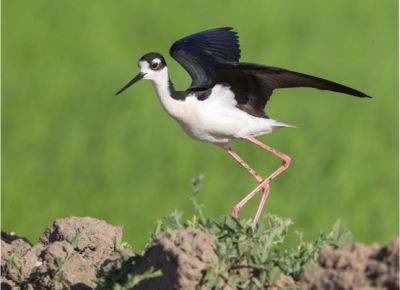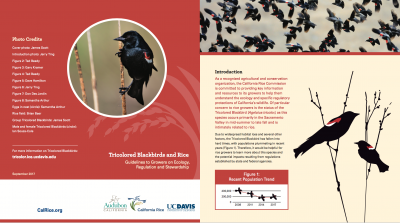Habitat Value
California rice fields provide habitat and nourishment for approximately seven million ducks and geese migrating along the Pacific Flyway each year. Ricelands are increasingly crucial to hundreds of thousands of shorebirds that nest in the fields year round. For example, recent studies have shown that California ricelands currently provide more than half of the nutritional requirements of wintering waterfowl in the Sacramento Valley.
Ricelands provide more than 300,000 acres of equivalent wetland. In other words, this amount of new wetlands habitat would have to be created to support the same waterbird populations that California's ricelands support today. Acquiring and restoring this amount of land to create wetland for wintering waterfowl populations would initially cost nearly $2.8 billion.
Rice fields provide a substantial wildlife resource benefit that comes essentially free to the public as long as California rice remains viable.









